Your cart is empty
RINO CONSERVATION IN NAMIBIA
STORY BY Byron Pace
NAMIBIA
It was a cold July morning, the sun still resting beneath the horizon, gradually, the soft glow of dawn graced an eastern sky, forcing the residual blues of night to give way.
The pre-dawn awakening was yet to begin, and only the gentle coo of an occasional collared dove broke the calm air. The understated beauty of this small bird’s morning voice locked me in the moment. I had been away from home for a long time, but the pull of this continent — its people, its wildlife and its stories — had become my gravity. It had been a constant for more than a decade, and in that moment, as the first shafts of sunlight spilled over the land, warming the chill of night, I knew I was exactly where I was supposed to be.
The sound of footsteps on loose ground broke my trance. “Morning Byron, did you sleep well?” came a familiar voice from through the aircraft hangar. “It’s a beautiful morning to fly, don’t you think?” There was no denying that. The still, crisp air and clear skies welcomed us to venture high, joining the leagues of birds, if only as visitors to their domain.
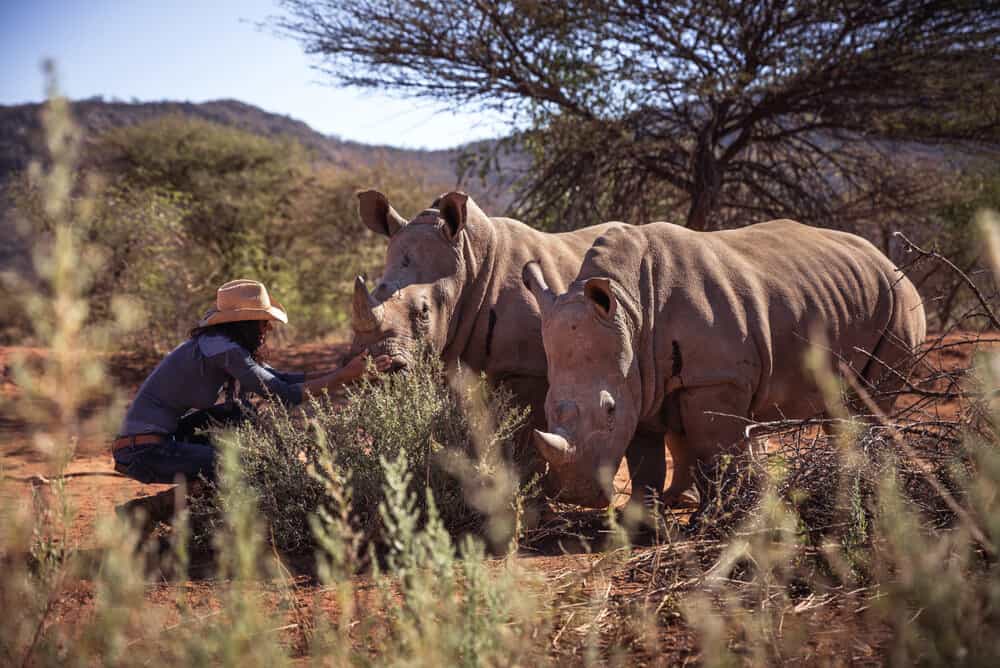
I was in Namibia to document an incredible story of modern-day conservation and wildlife management: restoring elephants to their previously roamed ranges in the Democratic Republic of Congo (DRC). The animals destined for this journey of land and sea were to be captured from the private reserve I was now about to fly over. After half a day on the road, we would spend four days at sea, sailing up the Namibian and then the Angolan coast, before entering the mighty Congo river along the banks of the DRC. As Annette finished her final pre-flight checks, we stood only a few days away from embarking on this journey. Any trepidation I felt had been overcome with an excitement of the unknown.
My pilot, Annette Oelofse, helped to establish the 30,000-hectare protected area of Mount Etjo with her late husband, renowned conservationist Jan Oelofse. He will always be remembered as the person who changed the face of game capture, and helped repopulate much of southern Africa with wildlife. Over the months I spent with Annette and her family, I came to admire the great reverence, calming influence and lasting impact that Jan had clearly had on their lives. Now, as the next chapter unfolded, it was clear to me that the torch was being carried by this remarkable woman.
I had been looking forward to flying with Annette ever since returning; to see the landscape the way she had described it to me. As we drifted over the dry, parched earth, desperate for life from the sky, long shadows dappled the ground, painting an ever-shifting flow of morning light. “This is the best time to see game from the air, before the sun gets too high,” crackled Annette over the radio. “It’s stunning up here, isn’t it? It’s so calming and peaceful. My mind always feels free when I’m flying.”
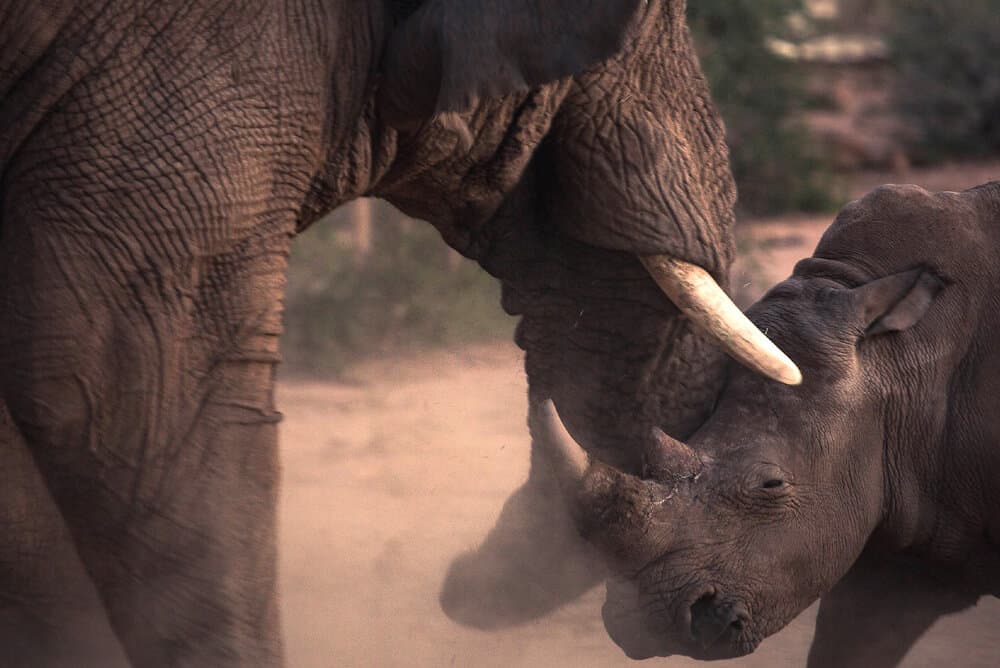
As those last words came through, we banked hard right. “Lions, did you see them?” I had been too entranced by the expanding orb of sunrise to notice. Annette took us a little lower, the cascading rays of morning now at our backs. Passing over the pride of lions, we picked out elephant, giraffe and a handful of antelope as we cut through the vein of mountains which made this reserve so distinct. Tipping the plane gently to my side, Annette pointed through the open door to the land below. “We will need to get some food out to these rhino — they are looking a little thin.”
I had been fortunate to spend a lot of time with rhino in the past, and in the days prior to our flight had joined Annette, her son Alex and the local vet to observe the reserve’s rhino-monitoring program. This entailed darting specific animals for microchipping and vaccination, logging data, and taking blood samples. The threat to African rhino, both black and white, has been well documented over the last few years, and many private owners have sold their remaining animals, unable to bear the cost of safeguarding them from poaching. Far from being an asset, the costs of ownership outweigh the commercial benefit (indeed, this lies at the very center of the debate regarding the legalization and regulation of the international rhino horn trade). However, Annette’s affinity for these majestic, gentle giants of the bush has cast this economic reality aside. There is an unquestionable, deep-seated and unique bond she shares with these animals.
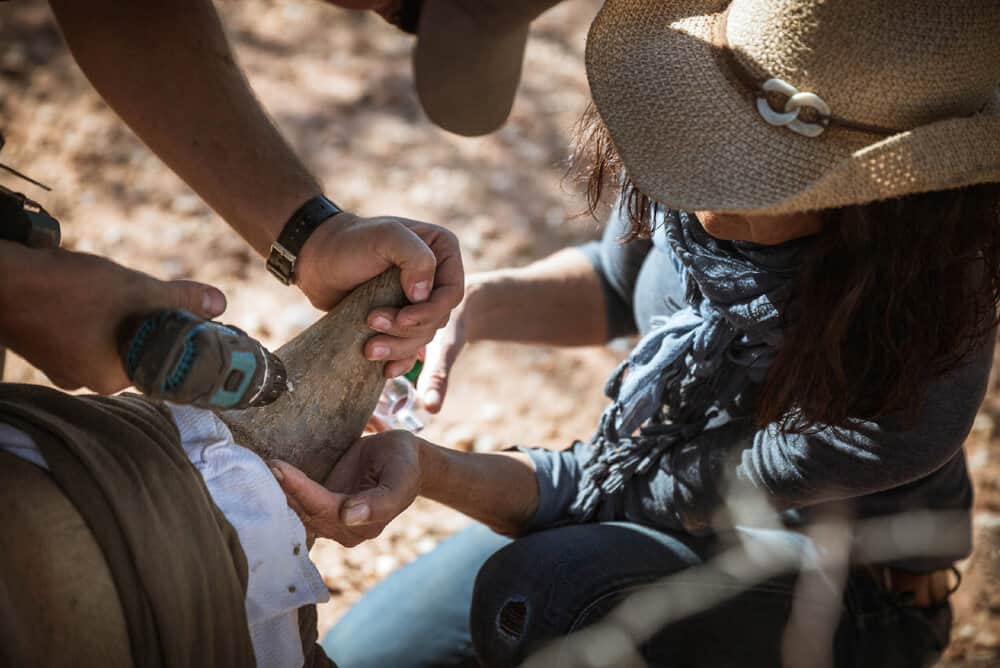
I witnessed a glimpse of this while visiting two orphaned white rhino Annette had been caring for, both victims of poaching in other parts of the country. Her reputation for nurturing rhino back to health and reintroducing them to wild very often makes her the first phone call in such cases. Under the Namibian government’s custodian program for endangered black rhino, Mount Etjo has become the preferred location, owing to the care and dedication of the team there. No financial benefit comes from this, apart from the limited tourist value from seeing one. The reality, however, is that black rhino tend to be secretive and elusive, rarely offering photographic tourists the opportunity of sightings. The custodian programs rely almost entirely on the good will of private owners like Annette, who care deeply for the long-term survival of the species.
Namibia, as with much of southern Africa, has faced many years of limited rainfall, and the implications of this are obvious. The once-dancing grasses and lush, abundant browsing lies barren, sparse and longing for signs of change. The landscape and the animals that roam it are powerless, existing at the mercy of conditions over which they have no control. But the implications of responsibility are clearly felt by those who have taken it upon themselves to watch over this landscape. By those who embrace the challenge and responsibility of custodianship, holding the land and its wild inhabitants in trust for future generations. In this lies the continued battle of knowing that all decisions come with a price — balancing the requirements of the rhino and other game with the impacts of an ever-increasing elephant population.
In the weeks prior to leaving for the DRC, I stood with Annette in the cusp of twilight, watching her elephant herd mull around the waterhole. As we talked, it was clear that the necessity of the choices she had to make weighed heavy. For a while, we just looked on in silence, Annete seemingly lost in thoughts of her past, the struggles of her present, and an unknown future. For thirty years, they had worked to establish this calm, dynamic balance of relationships into a family. It had started by raising orphaned calves from culling operations in Damaraland back in the ‘80s, and today, this success had outgrown the ability of the land to support them. They were her family too, but the time had come to embrace the next chapter. There was a tangible sadness, but more than anything, an overriding, infectious optimism at helping to create this new world in the heart of Africa.
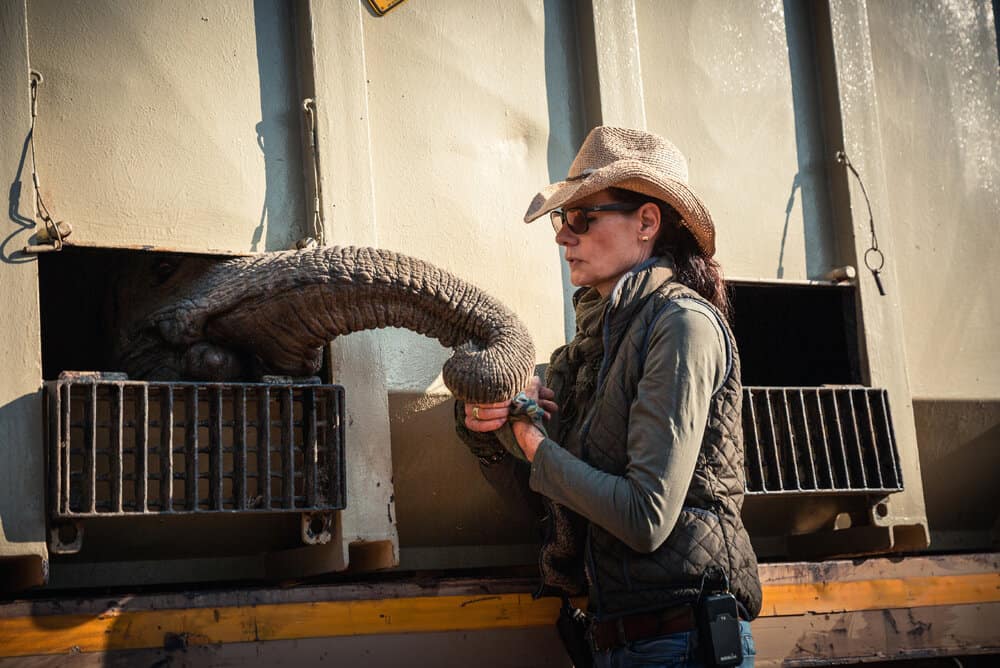
This was a place that had once roamed thick with the world’s largest living land mammal, but today had lost most of its wildlife to poaching. Rarely have I been so inspired as by the depth of care and connection Annette clearly shared with wildlife — a warmth and emotional acknowledgement of their impact on our lives, as much as ours on theirs. Yet, in the depths of this, she was able to find the strength to make the hard choices, valuing life, death and loss as a necessary cycle for the long-term good of the environment and the species within it.
These are daily realities for Annette and her son Alex, as they walk the precarious tightrope of wildlife management. Over the last three years, they have had to remove 6,000 head of game from their property, with a combination of capture, relocation and additional reduction culls, all to ensure the survival of what remains. In addition, they transport truckloads of lucerne (also known as alfalfa and grown worldwide as a high-protein cattle feed) from South Africa every week, feeding up to six tons a day. With every delivery, they hope for the rains to come, but there’s no guarantee when that will be.
“As Annette impressed upon me, “The additional feeding costs a lot of money, and we fund this through both tourism and hunting.” As I would find out, on their property, this comes at a ratio of 70:1, meaning they have to pull in 70 photographic tourists to generate the same revenue as a single hunter. ”
As Annette impressed upon me, “The additional feeding costs a lot of money, and we fund this through both tourism and hunting.” As I would find out, on their property, this comes at a ratio of 70:1, meaning they have to pull in 70 photographic tourists to generate the same revenue as a single hunter. There was no question that populations of wildebeest, zebra, eland and a multitude of other antelope species allowed their hunting operation to support the management of this land: a space where wildlife had a place to exist. One didn’t need to dig deep to understand what the alternative would be. This area would likely revert to the cattle farms it had previously held, and wildlife would slip into obscurity, with an inevitable degradation of the ecosystem.
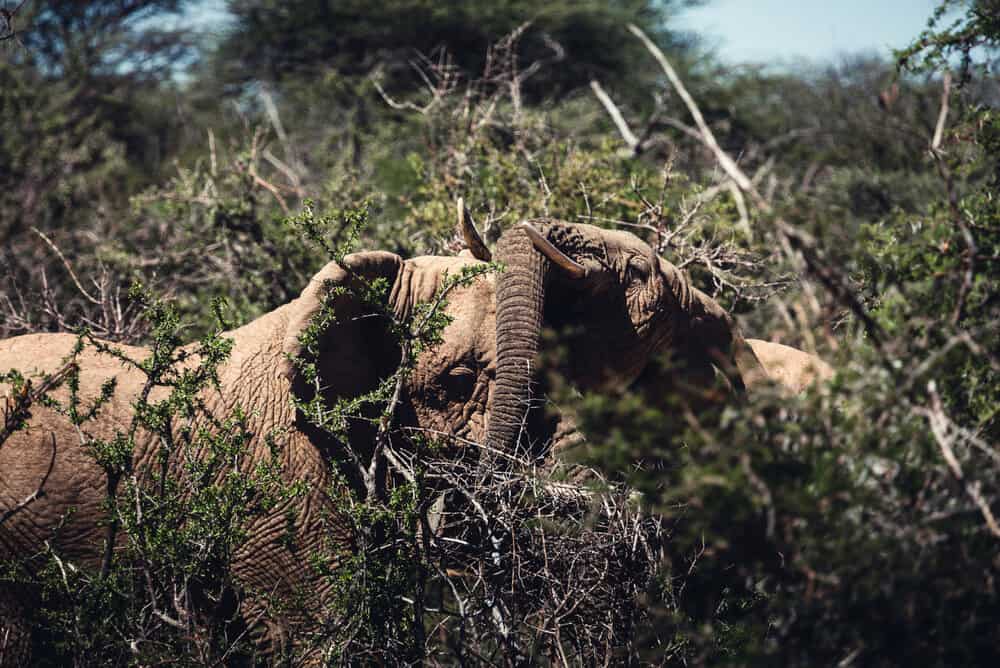
Conservation is riddled with hard choices, and the deep, personal effects of this became clearer the more time I spent in Annette’s presence. Her husband had always said that what was important was the animals you leave behind. Through Annette, I had begun to really understand what that meant. It takes a holistic view, suppressing the emotion for an individual animal in order to make the right choices for a species. In my experience, it is very often those who have the most invested in wildlife, emotionally and physically, who have the ability and strength to do this. It requires an acceptance that death is as much a part of conservation as life. The life we leave behind is what will shape the future.